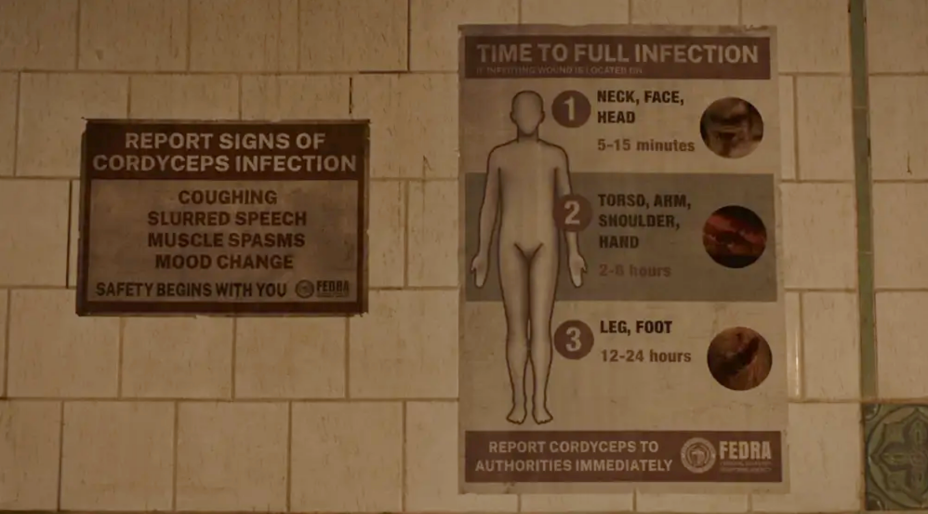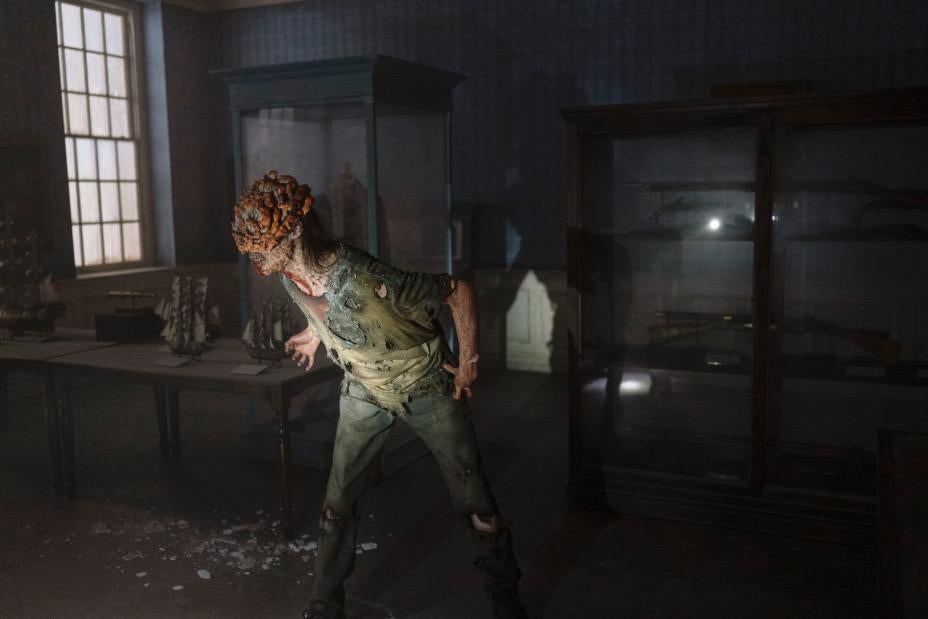[Warning: This story contains spoilers for The Last of Us Episode 2, “Infected.”] Sunday’s The Last of Us gets to the root of the fungal apocalypse and the Cordyceps brain infection, or CBI, the zombifying fungus that infects human brains. In Episode 1, “When You’re Lost in the Darkness,” a radio reported on “continued disturbances” in Jakarta, Indonesia, on Outbreak Day 2003. Episode 2 flashes back even further in the timeline to Jakarta on September 24th, 2003, where mycology professor Ibu Ratna (Christine Hakim) investigates ophiocordyceps samples collected from the corpse of a flour and grain factory worker on the west side of the city.
Videos by ComicBook.com
“Cordyceps cannot survive in a human,” Ratna says of the impossibility, plucking a squirming tendril from the worker’s mouth during an autopsy. Military officials explain the human-bitten worker became “suddenly violent” and attacked four co-workers, spreading her infection by biting three. The bitten workers were observed and had to be executed, but no biter was identified — and 14 workers remain missing. “There is no medicine,” Ratna notes, echoing the warning of epidemiologist Dr. Neuman (John Hannah). “There is no vaccine.” To stop the spread, Ratna advises they bomb the city and everyone in it.
The Last of Us: Fungus Infection, Explained
As Dr. Neuman explained in 1968, cordyceps is a mind-altering fungus that infects insects. Such fungi travel through the circulatory system to flood the brain with hallucinogens, bending the host’s mind to its will. The parasitic fungus controls and directs the host’s behavior “like a puppeteer with a marionette,” only to feed on its host from within, replacing its flesh with its own. But the victim doesn’t die: the parasite keeps its host alive by preventing decomposition.
In post-pandemic 2023, smugglers Joel (Pedro Pascal) and Tess (AnnaTorv) escort the bitten-but-immune Ellie (Bella Ramsey) to a Firefliesrendezvous outside the walls of the Boston QZ. Their mission is to reacha Firefly base camp somewhere out west, where doctors are working on aCBI cure. Because Ellie was bitten but did not succumb to the infection,she could be the key to finding a vaccine.

Stages of Infection
The sick show signs of Cordyceps infection: coughing, slurred speech, muscle spasms, and mood change. Where the wound is located on the body determines the time to full infection: neck, face, head (5-15 minutes); torso, arm, shoulder, hand (2-6 hours); leg, foot (12-24 hours).
According to FEDRA (the Federal Disaster Response Agency), there are four stages of Infected:
The Different Types of Infected in The Last of Us
- INFECTED STAGE 1 – “Runner”: Cordyceps has taken over the victim’s motor functions. Fast and agile. Stage 1 Infected usually travel in packs. DO NOT LET THEM SWARM YOU.
- INFECTED STAGE 2 – “Stalker”: Uses environment to hide and ambush victims. Will frequently flank and attack from behind. Approach with caution and check your surroundings.
- INFECTED STAGE 3 – “Clicker”: Completely blind, acute hearing, use echolocation to seek out prey. Keep your distance! Stage 3 Infected are known for their ferocious attacks and are extremely lethal.
- INFECTED STAGE 4 – “Bloater”: Rare but dangerous evolution of Stage 3 Infected. Incredibly strong and capable of throwing acidic projectiles. DO NOT ENGAGE UNLESS ABSOLUTELY NECESSARY.

How the Infected Work on The Last of Us
“Everyone said the open city was crazy. Like, swarms of Infected running around everywhere. So there aren’t Super-Infected that explode fungus spores on you? Or ones with split open heads that see in the dark like bats?”
Unlike the video game, the Cordyceps infection does not spread through airborne spores. Instead, there are two primary modes of transmission: bites and tendrils that spread the Cordyceps fungus orally in what looks like an open-mouthed kiss of death.
Some Infected last only a month or two, but some have been “walking around 20 years,” according to Joel. When Ellie notices the Infected in Episode 2 move together as if in a hive mind, Tess says the parasite hosts are connected. That poses constant dangers to survivors in the open city outside of the Quarantine Zone: Boston’s ruins are overgown with living fungi that alert the Infected swarm of human hosts.
“The fungus also grows underground. Long fibers like wires, some of them stretching over a mile. You step on a patch of cordyceps in one place, and you can wake a dozen Infected from somewhere else,” Tess explains. “Now they know where you are, now they come. You’re not immune from being ripped apart.”
Bone-dry fungus indicates dead Infected not stirred by human hosts. Episode 2 pits the trio against Runners (Stage 1 Infected) and the even deadlier Clickers (Stage 3 Infected) — named for their clicking noises — which can’t see, but can hear. Both can be killed with fire or multiple gunshots to the head.
Why Are There No Spores in The Last of Us?
“Obviously, there are some big things that we know we’re keeping[from the video game], of course, but then there are challenges from thegame to the show that had to be considered,” series co-creator andshowrunner Craig Mazin, who wrote and directed Episode 1, exclusivelytold ComicBook.”For instance, little things like the spores. In the game, youencounter spores, and you need to put a gas mask on. In the world thatwe’re creating, if we put spores in the air, it would be pretty clearthat they would spread around everywhere, and everybody would have towear a mask all the time. And probably everybody would be completelyinfected by that point.”
Mazin continued: “So, we challenged ourselves to come up with aninteresting new way for the fungus to spread, but mostly, I think wejust connected with the soul and spirit of the game.”
New episodes of The Last of Us premiere Sundays on HBO and HBO Max. Follow for more The Last of Us on ComicBook.









